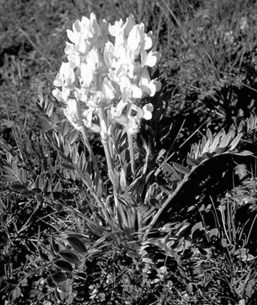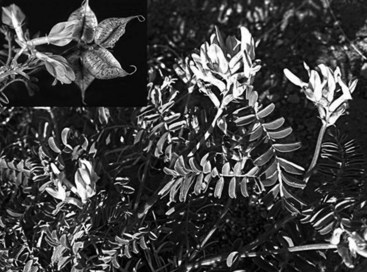Locoweed Toxicosis
Basic Information 
Definition
• Locoweeds (Astragalus and Oxytropis species) are native plants of North America that can cause a variety of systemic effects, especially on the central nervous system (CNS) and reproductive system. They can also affect the heart, intestinal system, and lymphocytes of horses and other livestock species.
• In addition, some locoweed species are selenium accumulators.
Epidemiology
Risk Factors
• Toxic at all growth stages, locoweeds are most palatable to horses in the spring when the plants are in flower. Some toxicity is retained in the dried plants.
• Although not truly addictive, horses find locoweeds palatable and may seek them out in preference to other forages, especially when the plants are in flower.
Geography and Seasonality
• More than 350 native species of locoweeds belong to the Astragalus and Oxytropis genera in North America. Relatively few species are important toxicologically.
• Geographically, the toxic species of locoweed are concentrated in the intermountain and southwestern United States. Locoweeds are short-lived perennial legumes that reproduce from seeds that can remain viable in the soil for more than 50 years (Figures 1 and 2).
Clinical Presentation
History, Chief Complaint
Changes in temperament, behavior, incoordination, and weight loss are typical presenting signs
Etiology and Pathophysiology
• Locoism results from the consumption of locoweeds infected with an endophyte (Embellisia spp.) that produces the indolizidine alkaloid swainsonine.
< div class='tao-gold-member'>
Stay updated, free articles. Join our Telegram channel

Full access? Get Clinical Tree






